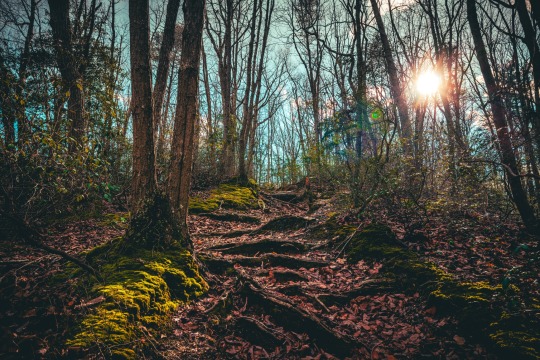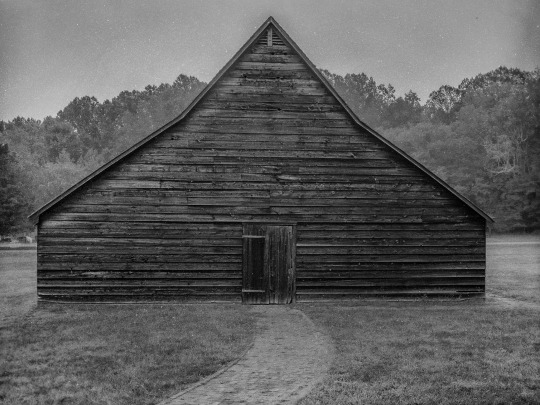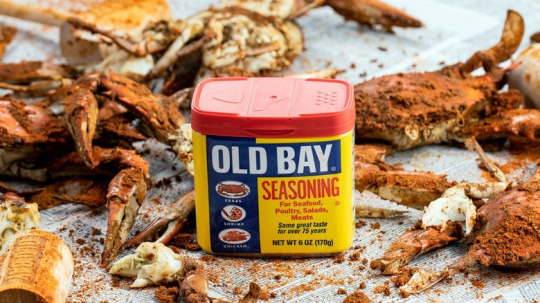#State of Maryland
Explore tagged Tumblr posts
Video
Gotta respect the classics.
744K notes
·
View notes
Text
Paywall Free
"The protected land includes a one-acre fish hatchery at Unicorn Lake in eastern Maryland and the sprawling Green Ridge State Forest in the west. It includes shorelines, farms and woods around Naval Air Station Patuxent River, and the Chesapeake Forest Lands, some 75,000 wooded acres that are home to species like bald eagles and the once-endangered Delmarva fox squirrel.
None of it can be developed, and all of it has helped Maryland reach a landmark conservation goal six years ahead of schedule, before any other state that’s joined an effort known as “30 by 30.”
The program is part of a global initiative to protect 30 percent of the Earth’s land and waters by 2030. In 2023, Maryland joined the effort and a year later, Gov. Wes Moore, a Democrat, announced that the goal had already been met. Nearly 1.9 million acres of land has been permanently protected from development, and the state has set a new target, to conserve 40 percent of its land by 2040...
Officials, land trustees and environmentalists said a unique set of factors led to Maryland’s success.
Since 1969, Maryland has levied a 0.5 percent transfer tax on real estate sales and used it for Program Open Space, which enables the state to acquire green spaces from voluntary sellers and purchase conservation easements from private landowners.
Owners like farmers and forest managers can still work the land, but agree that it can never be developed, even if the land changes hands.
Crucially, conservation has bipartisan support at the state level, said Elizabeth Carter, a land protection director at The Nature Conservancy. She said federal and state agencies, nonprofit groups and land trusts have worked together with shared goals, which helped the state meet its target sooner than many expected.
“That’s something we celebrate, and it’s exciting,” she said...
Josh Kurtz, Maryland’s secretary of the Department of Natural Resources, said that while the state had to balance conservation needs with development pressures and housing demand, natural spaces were crucial to offsetting planet-heating greenhouse gas emissions and to protecting the Chesapeake Bay.
“Being able to sequester carbon and mitigate climate impacts makes us more resilient in the face of climate change,” Mr. Kurtz said. “It’s also one of our key water quality strategies.” ...
According to Mr. Kurtz’s office, land conservation measures have prevented about 85,000 pounds of nitrogen and 6,000 pounds of phosphorus, which fuel algae blooms and starve water of oxygen, from flowing into the bay each year. The University of Maryland calculated that the state’s trees and forests absorbed and locked away 6.5 million metric tons of carbon dioxide in 2023...
While the state is still pushing toward its 40 by 40 target, there’s been a setback. Facing a $3.3 billion budget shortfall, the Maryland General Assembly recently voted to take $100 million from Program Open Space and other state conservation programs over the next four years. But A.J. Metcalf, a spokesman for the state’s natural resources department, said the programs were projected to generate $468 million through fiscal year 2029, enough to continue to acquire land for conservation “at a normal pace.”
Mr. Kline said he hoped that the state surpassed its next goal. “I would certainly hate to see our foot come off the pedal after 40 percent,” he said. “We feel like we’ve got something pretty special that’s worth protecting.”"
-via The New York Times, April 21, 2025
#maryland#united states#us politics#conservation#north america#natural resources#30 by 30#climate change#wes moore#climate action#good news#hope
965 notes
·
View notes
Text

Find me frolicking in the woods
#Calvert cliffs state park#Maryland#aimeekb#hiking#lesbians who hike#nature#natures staircase#forest#travel#explore#adventure#landscape#forestcore#travel photography#mossy forest#trees#big trees#sunsets#l
2K notes
·
View notes
Text

photo: David Castenson
#tobacco barn#smallwood state park#historic buildings#black and white photography#photographers on tumblr#maryland
352 notes
·
View notes
Text
can we agree that this draft class is the FINEST draft class bc damn
#uconn wbb#uconn#paige bueckers#georgia amoore#saniya rivers#aziaha james#shyanne sellers#wnba#wnba draft#maryland wbb#nc state wbb#kentucky wbb
101 notes
·
View notes
Text
Greenbelt Maryland. Or, how America almost solved housing only to abandon it.

**I AM NOT AN EXPERT! I AM JUST AN ENTHUSIST! DO NOT TREAT MY OPINIONS/SPECULATION AS EDUCATION!**
During the Depression America faced a housing crisis that rhymes with but differs from our own. It’s different in that there wasn’t a supply issue, there were loads of houses in very desirable areas, but they were still unaffordable as people’s incomes collapsed causing a deflationary spiral. While the housing supply subtly grew and succeeded demand, people simply couldn’t pay the meager rents and mortgages. Herbert Hoover failed to manage the Depression, while his inaction is greatly exaggerated, his policy of boosting the economy with works projects and protecting banks from runs failed and the depression only got more pronounced in his term. In comes Franklin Roosevelt, a progressive liberal much like his distant and popular cousin/uncle-in-law Teddy. Franklin’s plan was to create a large safety net for people to be able to be economically viable even if they’re otherwise poor. These reforms are called the New Deal and they did many controversial things like giving disabled and retired people welfare, giving farmers conditioned subsidies to manipulate the price of food, a works program to build/rebuild vital infrastructure, etc. One of these programs was the USHA (a predecessor of America’s HUD), an agency created to build and maintain public housing projects with the goal of creating neighborhoods with artificially affordable rents so people who work low-wage jobs or rely on welfare can be housed.
In this spirit, the agency started experimenting with new and hopefully efficient housing blueprints and layouts. If you ever see very large apartment towers or antiquated brick low-rise townhouses in America, they might be these. The USHA bought land in many large and medium-sized cities to build “house-in-park” style apartments, which is what they sound like. Putting apartment buildings inside green spaces so residents can be surrounded by greenery and ideally peacefully coexist. Three entire towns were built with these ideas outside three medium-sized cities that were hit hard by the depression; Greenbelt outside DC, Greenhills outside Cincinnati, and Greendale outside Milwaukee. The idea was to move people out of these crowded cities into these more sustainable and idyllic towns. There were many catches though, the USHA planned for these towns to be all-white, they used to inspect the houses for cleanliness, they required residents to be employed or on Social Security (which basically meant retired or disabled), they also had an income limit and if your income exceeded that limit you were given a two-month eviction notice, and you were expected to attend town meetings at least monthly. While the towns didn’t have religious requirements they did only build protestant churches. Which is an example of discrimination by omission. While a Catholic, Jew, Muslim, etc could in theory move into town they also couldn’t go to a Catholic church, synagogue, or Islamic center without having to extensively travel. Things planned communities leave out might indicate what kind of people planned communities want to leave out. Basically, the whole thing was an experiment in moving Americans into small direct-democracy suburbs as opposed to the then-current system of crowded cities and isolated farm/mine towns. This type of design wasn’t without precedent, there were famously company towns like Gary and Pullman which both existed outside Chicago. But those lacked the autonomy and democracy some USHA apparatchiks desired.
The green cities were a series of low-rise apartments housing over a hundred people each, they were short walks from a parking lot and roads, and walking paths directly and conveniently led residents to the town center which had amenities and a shopping district. Greenbelt in particular is famous for its art deco shopping complex, basically an early mall where business owners would open stores for the townspeople. These businesses were stuck being small, given the income requirements, but it was encouraged for locals to open a business to prove their entrepreneurial spirit. Because city affairs were elected at town meetings the city was able to pull resources to eventually build their own amenities the USHA didn’t originally plan for like a public swimming pool or better negotiated garbage collection.
These three cities were regarded as a success by the USHA until World War II happened and suddenly they showed flaws given the shift in focus. These towns housed poor people who barely if at all could afford a car, so semi-isolated towns outside the city became redundant and pointless. The USHA also had to keep raising the income requirement since the war saw a spike in well-paying jobs which made the town unsustainable otherwise. During the war and subsequent welfare programs to help veterans, these green cities became de facto retirement and single-mother communities for a few years as most able-bodied men were drafted or volunteered. Eventually, the USDA would make the towns independent, after the war they raised the income limit yet again and slowly the towns repopulated. As cars became more common and suburbanization became a wider trend these towns would be less noticeably burdensome and were eventually interpreted as just three out of hundreds of small suburban towns that grew out of major cities. They were still all-white and the town maintained cleanliness requirements; after all they lived in apartments it just takes one guy’s stink-ass clogged toilet to ruin everyone’s day.
By the 1950’s these towns were fully independent. Greendale and Greenhills voted to privatize their homes and get rid of the income limit all together so the towns can become more normal. Greenhills, Ohio still has many of these USHA-era houses and apartments, all owned by a series of corporations and private owners. Greendale, Wisconsin property owners have demolished most of these old houses and restructured their town government so most traces of its founding are lost. But Greenbelt, Maryland still maintains a lot of its structure to this day. Greenbelt has privatized some land and buildings, but most of the original USHA apartments are owned by the Greenbelt Homes, Inc cooperative which gives residents co-ownership of the building they live in and their payments mostly go to maintenance. Because Greenbelt was collectively owned the House Un-American Activities Committee would blacklist and put on trial most of Greenbelt’s residents and officials. Though they didn’t find much evidence of communist influence, the town was a target of the red scare by the DMV area, residents were discriminated, blacklisted, and pressured into selling their assets. While Greenbelt did commodify some of the town, the still existing co-ownership shows the town’s democratic initiative to maintain its heritage. The green cities desegregated in the 50’s and 60’s depending on state law, Greenbelt was the last to desegregate under the Civil Rights Act of 1964, while discrimination persisted for years by the 1980’s the town would become half non-white, today the town is 47% black and 10% Asian.
Though these towns largely integrated with a privatized and suburbanized America, they do stand as a memorial to an idea of American urbanism that died. They were designed for walkability and were planned to be more democratic and egalitarian towns, with the conditions that came with segregation and government oversight. You can’t ignore the strict standards and racism in their history, but you can say that about many towns. How do you think America would be different if more cities had green suburbs that were more interconnected and designed for community gatherings?
#urbanism#DC#maryland#dmv#Cinncinatti#milwaukee#ohio#wisconsin#New Deal#history#fdr#franklin roosevelt#politics#urban#city#apartment#housing#great depression#article#co op#socialism#segregation#discrimination#housing crisis#landlords#united states
228 notes
·
View notes
Text
American state flags sh!ttily redesigned by a European
Maryland:

Montana:

Washington:

Hawaii:

Arkansas:

#vexillology#american flags#state flags#these look like sh!te but its quite fun really#maybe ill continue#flag redesign#state flag redsign#american flag redesign#maryland#montana#washington#hawaii#arkansas
151 notes
·
View notes
Text




Convair PB4Y-2 Privateer (BU. no. 59351) parked at the Naval Air Station Patuxent River, Maryland.
Photographed on July 11, 1944.
U.S. Naval History and Heritage Command: NH 87982, NH 87983, NH 87984, NH 87985
#Consolidated PB4Y-2 Privateer#Consolidated PB4Y-2#PB4Y-2 Privateer#PB4Y-2#Privateer#Patrol Bomber#Bomber#United States Navy#U.S. Navy#US Navy#USN#Navy#World War II#World War 2#WWII#WW2#WWII History#History#Military History#Naval Air Station Patuxent River#Maryland#July#1943#my post
190 notes
·
View notes
Text

Angela Alsobrooks defeated U.S. Representative David Trone in the Democratic primary and won the general election against former Republican governor Larry Hogan, becoming Maryland's first African-American senator and the third African-American woman elected as senator of any U.S. state.
#Angela Alsobrooks#wes moore#Maryland...the saving grace#hate what this country has become#but having both a Senator and Governor who are black representing the state of MD is something to be proud of
119 notes
·
View notes
Video
Feral Foal by Sea Moss Monster Via Flickr: Wild Chincoteague Foal on Assateague Island Assateague's wild horses are well known, even to many people who have never been to the island. The "wild" horses on Assateague are actually feral animals, meaning that they are descendants of domestic animals that have reverted to a wild state. Horses tough enough to survive the scorching heat, abundant mosquitoes, stormy weather and poor quality food found on this remote, windswept barrier island have formed a unique wild horse society. www.nps.gov/asis/learn/nature/horses.htm
#Assateague Island#Assateague Island National Seashore#Assateague State Park#Assateague horse#Foal#Horse#Mamal#Maryland#Mom#Mother#Wild horse#Wildlife#Chincoteague Pony#Chincoteague#flickr
56 notes
·
View notes
Text
"A newly formed group of women is creating a map of community fridges and neighborhood pantries across Baltimore, the Bmore Community Fridge Network.
"I am one of four women," said Elizabeth Miller, one of the network organizers. "We are career women, and we just want to see Baltimore do well."
They hope to highlight neighbors looking to serve others, hoping residents living nearby can get connected to the free food being offered to them. Miller said sometimes it can be hard for some residents to travel to local food pantries.
"Some people who are struggling with food insecurity have a lot going on, and it's really hard to get to a pantry on the days that they're open, on the days of the giveaway, navigating bus lines and bringing that food back home with them," Miller said. "Some people simply don't drive."
Miller said the group has connected with about four community fridges and has put them on the network map. However, the group plans to add more locations to the map. They will be at organizations already serving the community.
"...we will provide food for you."
"We provide resources, therapy, and outpatient services," said Nikki Smith, the CEO of The Journey Mental Health and Wellness.
"I don't care who you are, where you are," Smith said. "If you ring the doorbell and you're hungry, we will provide food for you."
The Bmore Community Fridge Network secured a donated refrigerator, which will sit outside of Smith's center, adding it to the community fridge map. Smith adds that other organizations are looking to chip in with donations to keep the fridge stocked.
"I'm hoping that everyone will pay it forward and they will understand that 'Hey wait, there's somebody here that's helping. Maybe I can help too," she said.
The Food Project will also receive a donated refrigerator, which will sit outside of their center.
"I think it's wonderful to have this additional access to food," said The Food Project Executive Director Michelle Suavo. "At the end of the day, we have a pop-up market three times a week, and it's still not enough...Throughout the night, there are so many people coming through that this is really going to help to service that additional need."
As the network grows, they are reminding families of the many neighbors across the city who truly care.
"There's no real rules about how much you can take," Miller said. "Take what you need. You never know what mouths are waiting at home."
Miller said the Bmore Community Fridge Network is trying to get more fridges and searching for more locations to house them.
She encourages everyone to donate to these community fridges by dropping off what you can to a fridge.
"It's spring," she said. "Go through your closet. Do you have canned goods or shelf-stable items that you can donate to one of these pantries? Do you have extra items in your freezer?"
Food insecurity in Baltimore
Maryland Food Bank data shows more than 90,000 city residents are food insecure. The Food Bank said 1 in 3 Marylanders face food insecurity.
The Baltimore Area Survey (BAS) found 28% of Baltimore area residents experienced food insecurity in 2024, down from 36% in 2023.
However, the survey showed the region's rate of food insecurity remained nearly twice as high as the national average.
If you or anyone you know are struggling with food insecurity, click here for an additional resource."
-via CBS News, March 28, 2025
588 notes
·
View notes
Text

Yakushima sika Cervus nippon yakushimae
Observed by shortbread, CC BY-NC
47 notes
·
View notes
Text

photo: David Castenson
177 notes
·
View notes
Text
somewhat hilariously, I have a semi-regular customer who is one of MD’s congressional reps, and he was in a couple of days ago.
as he was checking out, I said “hey I hope you don’t mind me saying this, but do you think you could ask Jamie Raskin to just, like — chill? a little? the election is so soon and I am so stressed out about it.”
and I said it jokingly and meant it mostly jokingly, so he laughed and shook my hand and said he’d see what he could do.
presumably he already knew about Current Events so I’m going to hope that his lack of apparent stress was a good sign.
#vintage shop life#my state house rep is also a customer — she has great taste in jewelry#maryland my maryland
146 notes
·
View notes
Text
The news said something interesting and important this morning, and that if you're under this heatwave/dome and you have to spend ANY amount of time outside in it you need at least to spend DOUBLE the time inside and cooling down. If you were outside for one minute, you need to cool down and rest inside for at least two minutes. If you were outside for a half hour, you need to be inside resting and cooling down for a whole hour. If you were out there for two hours, you need four to recover, and so on.
Most importantly, stay hydrated. Even if all you drink is caffeinated soda, it's still better than not drinking anything at all. Pretty much anything other than alcohol and energy drinks like Monster and such are fair game for hydration (this coming multiple doctors I see who have said this to me, the caffeine in a can of coke isn't going to make you pee more fluid than you're taking in).
Stay safe, stay cool, stay hydrated, and wear sunblock when outside even if you think your skin is too dark to need it–Black people are more likely to die of skin cancer than white people because doctors are typically trained to identify it on pale skin. By the time it's big enough for doctors trained that way to take notice, it's often too late.
102 notes
·
View notes
